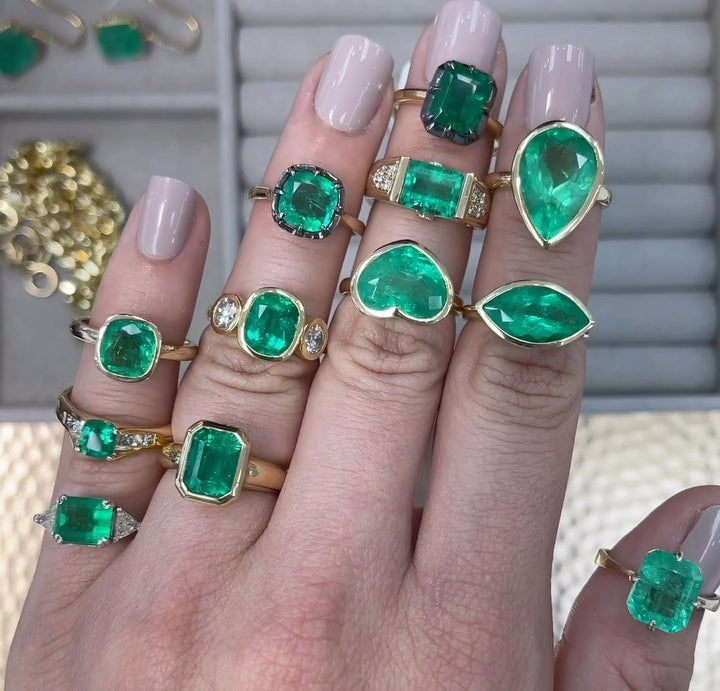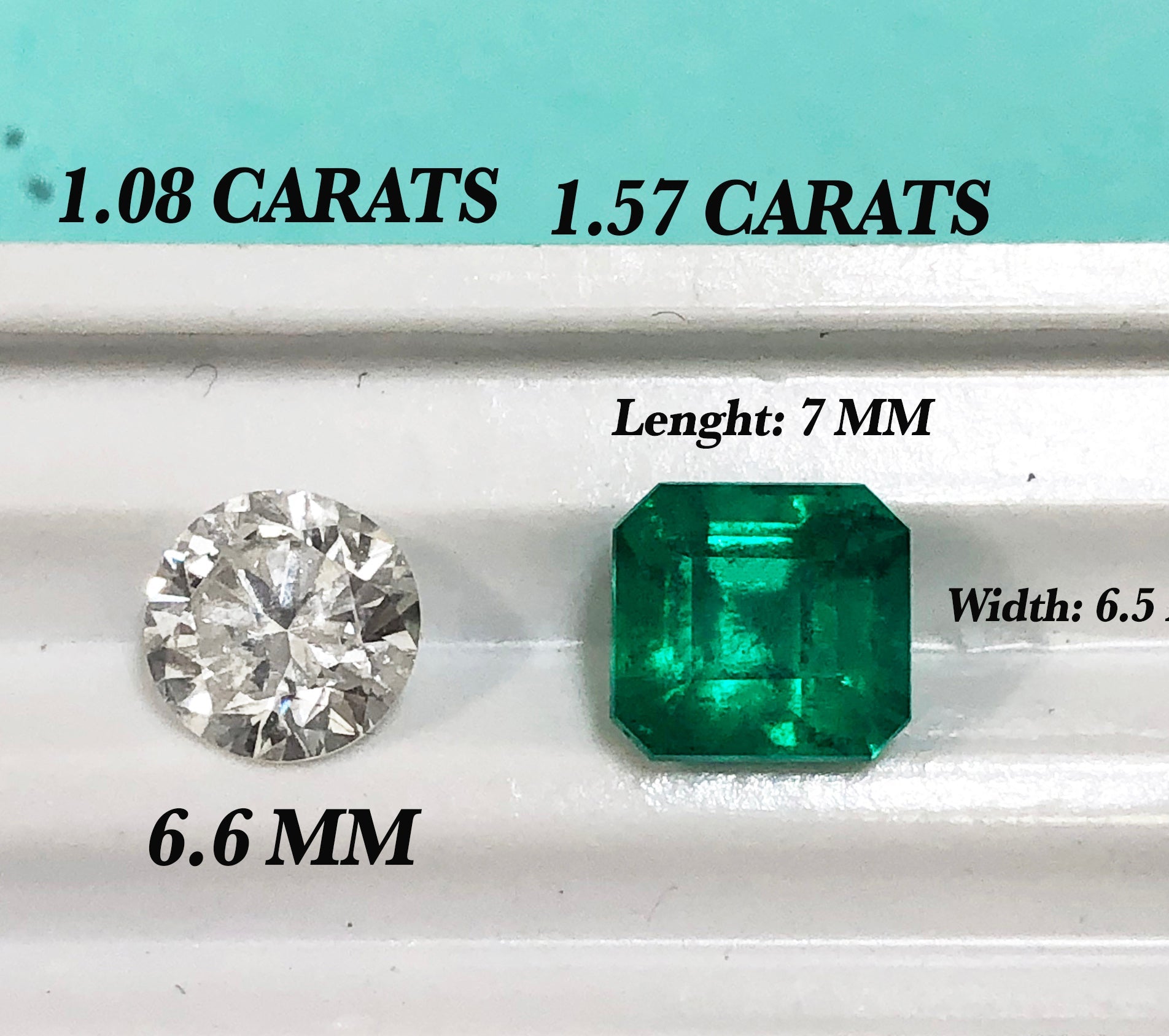Emeralds are gemstones of unparalleled beauty and rarity. Their mesmerizing green color and exquisite clarity have captivated humans for centuries. But did you know that emeralds are more than just stunning pieces of jewelry? Emeralds also symbolize growth, inspiration, and wisdom. And that's exactly what Emerald Education is all about - discovering the world of knowledge, growth, and inspiration.
In this blog, we will take you on a journey to discover the world of Emeralds. We will explore the history, myths, and legends surrounding these gemstones, and delve into their geological origins and unique properties. From the ancient civilizations that treasured emeralds to the modern-day uses of these gemstones, we will cover everything you need to know about emeralds. Let's dive in and explore the world of these stunning green gemstones!
Emerald, One of The Rarest Gemstones on Earth
Did you know that emeralds are one of the rarest gemstones on earth? Or that the oldest emeralds are believed to be over 2.97 billion years old? One reason emeralds are so rare is that they are a type of beryl, a mineral that typically forms in granite or pegmatite rock. Unlike other beryl gemstones such as aquamarine or morganite, emeralds require very specific geological conditions to form.

Why So Rare?
Emeralds need to be formed in the presence of chromium, vanadium, or iron, which gives them their distinctive green color. These conditions are rare, which is why emeralds are so scarce. The scarcity of emeralds also comes from the fact that they are found in only a few places around the world. The most famous emerald deposits are located in Colombia, where they have been mined for over 500 years.
Other significant sources of emeralds include Zambia, Brazil, and Zimbabwe. However, even in these locations, finding high-quality emeralds can be a challenge, making them even more valuable. Emeralds have been treasured by cultures around the world for thousands of years.
What Makes Emeralds So Valuable? 5 Reasons
Emeralds are one of the most valuable gemstones in the world, known for their stunning green color, rarity, and beauty. Below are 5 reasons why emeralds are so valuable:
- Rarity: Emeralds are one of the rarest gemstones on earth. They require very specific geological conditions to form and are found in only a few places around the world. High-quality emeralds are even rarer, which makes them more valuable.
- Color: The color of an emerald is one of its most important characteristics. The most valuable emeralds have a deep green color, often described as "emerald green." This color is caused by the presence of chromium and vanadium in the gemstone, and the intensity of the color is determined by the amount of these elements present.
- Clarity: The clarity of an emerald is also an important factor in its value. Most emeralds have inclusions or imperfections, which can affect their appearance and value. However, some emeralds have fewer inclusions, making them more valuable.
- Size: The size of an emerald is another factor that affects its value. Large emeralds are rare and highly sought after, making them more valuable than smaller ones.
- History and Rarity of the source: Emeralds from certain sources, such as Colombia, are considered to be of higher quality and more valuable. This is due to their history and rarity, as well as the unique properties of the geological formations where they are found.

In conclusion, emeralds are valuable due to their rarity, color, clarity, size, and history of their source. As one of the rarest and most beautiful gemstones in the world, emeralds are highly prized by collectors and jewelry enthusiasts alike.
What Does Emerald Symbolize?
Emeralds are not only prized for their beauty but also for their symbolism. These gemstones are believe to have been associated with various meanings and beliefs throughout history and across cultures.
Growth and Renewal: Emeralds are often associated with growth, renewal, and rebirth. In ancient cultures, emeralds were believed to have healing properties and were used in various remedies. They were also believed to promote spiritual growth and help people connect with nature.
Wisdom and Intelligence: Emeralds have been associated with wisdom and intelligence since ancient times. They were believed to enhance mental clarity and increase one's ability to learn and retain knowledge.
Love and Romance: Emeralds have also been associated with love and romance. In ancient Greece and Rome, emeralds were associated with the goddess of love and were often given as gifts to express love and affection.
Prosperity and Success: Emeralds have been considered a symbol of prosperity and success since ancient times. They were believed to bring good fortune and help one achieve their goals.
Protection and Healing: Emeralds were believed to have protective properties and were often worn as talismans to ward off negative energy and protect against harm. They were also believed to have healing properties and were used in various remedies to treat physical and emotional ailments.
In ancient Egypt, emeralds were considered a symbol of fertility and rebirth, while in medieval Europe, they were believed to have healing properties. Today, emeralds are still highly prized and are used in some of the most exquisite jewelry designs.

Emeralds in Culture: A Look at the Role of Emeralds in History and Art
Emeralds have played an important role in many cultures throughout history, particularly in South America, where they were originally discovered.
Ancient Cultures: Emeralds have been used in jewelry and other decorative objects since ancient times. In Egypt, emeralds were believed to represent rebirth and were often used in burial tombs. The Incas and Aztecs in South America also valued emeralds and used them in their religious ceremonies.
Symbolism: Emeralds have been associated with various symbols and meanings across cultures. In ancient Greece and Rome, emeralds were believed to have healing properties and were associated with the goddess of love. In other cultures, emeralds have been associated with protection, prosperity, and success.
Jewelry: Emeralds have been a popular gemstone for jewelry throughout history. They have been used in necklaces, bracelets, rings, and other pieces, often paired with diamonds or other gemstones. In modern times, emerald engagement rings have become increasingly popular as an alternative to traditional diamond rings.
Mining: Emerald mining has been an important industry in many countries, particularly Colombia, which is known for producing some of the finest emeralds in the world. The mining of emeralds has had a significant impact on the culture and economy of these countries, providing employment and income for many people.
Art: Emeralds have been used in art and sculpture for centuries. The green color of emeralds has been a popular choice for many artists, particularly in the Art Nouveau movement of the late 19th and early 20th centuries. Emeralds have also been used in religious art, particularly in the creation of Christian icons and sculptures.
In conclusion, emeralds have been an important part of many cultures throughout history. They have been used in jewelry, art, and religious ceremonies, and have been associated with various symbols and meanings. The mining of emeralds has also had a significant impact on the culture and economy of many countries. Today, emeralds continue to be a popular and highly prized gemstone, admired for their beauty and rarity.






Leave a comment
This site is protected by hCaptcha and the hCaptcha Privacy Policy and Terms of Service apply.